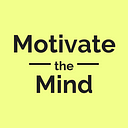Reclaim Your Inner Peace Part 3
Take the third simple step toward a more peaceful day by learning to pause when stress hits
A friend of mine recently told me that she wishes she had more of her husband’s “Ghandi,” and less of her own “Ronda Rousey.” Whenever things go wrong in her life, her initial impulse is to fight against it. While she recognizes that this might be the way she’s been conditioned, she also knows this is a pattern she doesn’t want to keep.
“This initial impulse is like a drug,” she told me. “Everything about it seems so right in the moment. And reacting to my frustration feels so good. . . but when the smoke clears, I’m still left with the problem. Nothing has been solved. In fact, most times, everything is made so much worse because I let my emotional reaction run the show.”
So, what could she do instead?
In theory, the answer is simple. In practice, it requires commitment, determination, and hard work. But the return is well worth the effort.
Here’s the advice I gave her:
The next time your impulses pressure you to react, slow down and pause your reaction by using the simple practice of posture, breath and mind.
When you can choose to slow down and calm down before taking any action, this gives you a real chance of changing your old, damaging habit of reactivity.
How the 3 Steps Come Together
In the first step toward a more peaceful day, I asked you to begin integrating the practice of posture, mind and breath into your daily routine by doing it as the first thing when you get up and the last thing before you go to bed. The second step is then to be more mindful of your posture and breath throughout the day while making an effort (however slightly) to slow down.
And now, the third step is to pause and employ the Practice when hit with a stressful situation.
The Power of The Pause
Dr. Jill Bolte Taylor talks about the neuroscience behind this with her 90-second rule. If you’re dealing with similar reactive habits, I’d recommend doing the Practice for the 90-second pause Dr. Jill Bolte Taylor recommends:
- First, make sure you’re actually breathing. (Not holding your breath, which often happens when we’re stressed.)
- Continue breathing as you relax your shoulders and release muscular tension anywhere else you may be holding it.
- Continue breathing as you ground yourself in the reality of the present moment.
This tool can be a powerful force for change in your life because often doing nothing is a much more constructive response than doing something (ANYTHING!) just to relieve the pressure you’re feeling.
We’re all familiar with the saying “Don’t just stand there — DO SOMETHING!” This is exactly why, when you’re under pressure to do something, it is important to recognize it as a conditioned reaction to stress.
Instead, pause and remind yourself that if your emotions are churning:
You don’t have to do anything. Exercise your power to choose and just stand there until you calm down.
Waiting out your reactivity is the best investment you can make in efficient problem solving. When you practice the pause in response to trouble, you remind yourself that even in a crisis you still have a choice to Stop and Drop onto the ground of reality before you Roll into any action.
Take good care : )
Meg
If you’d like to learn more about my approach to inner peace, sign up for my free Practical Pathways to Inner Peace videos here.
